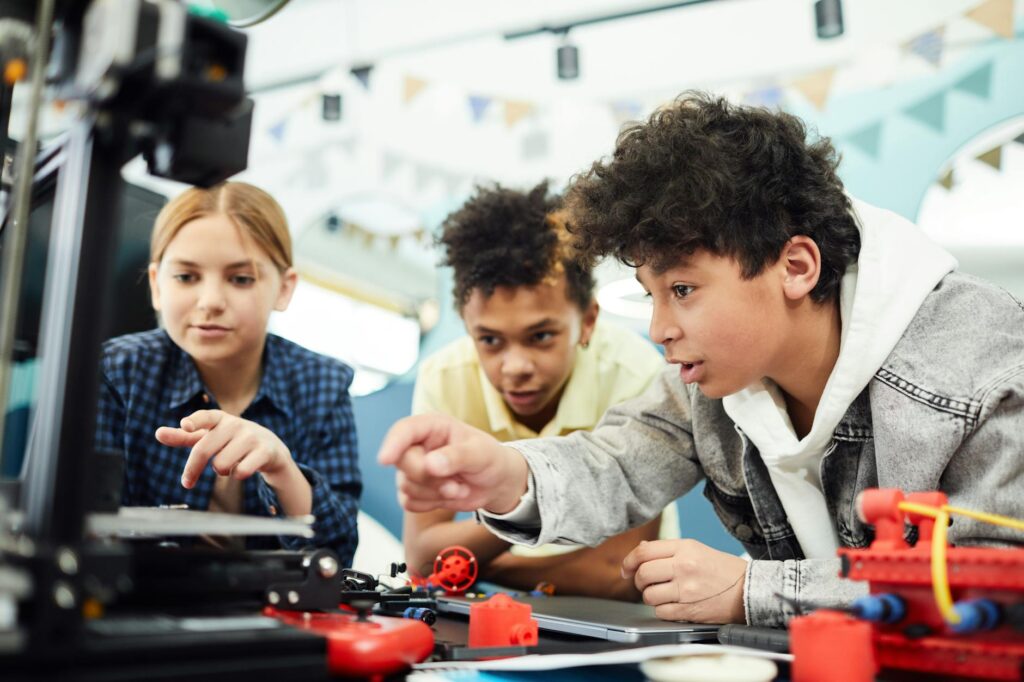
From jaw-dropping medical breakthroughs to high-tech couture and even printed homes, 3D printing is reshaping entire industries in ways we never imagined. In this quick, fun guide, we’ll cover how 3D printing is making waves in medicine, fashion, food, and construction—and yes, how it might even change what’s on your dinner plate.
1. Medicine: Printing the Future of Healthcare
3D printing in medicine sounds futuristic, but it’s happening now, and it’s amazing. Imagine a world where surgeons practice on realistic, patient-specific organ models or where patients receive customized implants made precisely for their needs. That future? It’s here.
- Human Organs on Demand: Scientists predict that, within a generation, they’ll be printing full human organs—think hearts, kidneys, and livers—for transplants. No more endless waiting lists!
- Surgical Training and Planning: Anatomical replicas let doctors rehearse surgeries, honing techniques in advance on lifelike models tailored from patient data.
- Custom Prosthetics: Gone are the days of “one-size-fits-all” prosthetics. With 3D printing, each limb can be custom-fit, creating comfort and precision like never before.
Curious about the possibilities? Check out CareCloud’s vision for the future of 3D printing in medicine.
2. Fashion: Where Technology Meets Style
In fashion, 3D printing isn’t just a tool—it’s a revolution. This tech lets designers go wild with creativity, crafting intricate, one-of-a-kind garments that push the boundaries of traditional clothing.
- 3DFashion™ Technology: With direct-to-textile printing, designers print complex patterns and textures straight onto fabric. This results in bold, vibrant pieces that wouldn’t be possible with traditional manufacturing.
- Sustainable and On-Demand: 3D printing can eliminate waste by only using the necessary material, meaning eco-friendly, zero-waste designs are more attainable than ever.
- Unique Materials: Nylon powder, photosensitive resin, and other unique materials create high-durability fabrics that hold their shape, color, and style like a dream.
For a deep dive into the future of 3D-printed fashion, visit Stratasys.
3. Food: 3D Printing What’s on Your Plate
3D-printed food? Yes, it’s real, and it’s surprisingly practical! This technology is enabling chefs, nutritionists, and food scientists to create personalized dishes tailored to individual tastes and nutritional needs.
- Custom Nutritional Profiles: Imagine meals printed just for you, with exact vitamins and nutrients you need. Athletes, children, and even people with specific health conditions could benefit from “prescribed” meals.
- Intricate Designs: From chocolates to pasta, 3D printers allow chefs to create visually stunning, edible sculptures that could never be achieved by hand.
- Potential for Sustainable Food Sources: Some companies are experimenting with plant-based or even lab-grown ingredients to create food that’s environmentally friendly and nutrient-packed.
4. Construction: Building Houses in Record Time
It’s not just the small stuff—3D printing is revolutionizing how we build houses and industrial structures. Builders are now 3D printing homes and offices that are eco-friendly, cost-effective, and incredibly fast to produce.
- Rapid Housing Production: With 3D printing, entire houses can be constructed in days instead of months, which could help solve housing shortages around the world.
- Sustainable and Affordable: By using eco-friendly, locally-sourced materials, 3D-printed homes can reduce environmental impact and make home ownership more accessible.
- Complex Industrial Components: In industrial settings, 3D printing is being used to create custom tools and components quickly, saving companies both time and money in infrastructure projects or operational improvements.
FAQ: Answering Your Burning Questions
What did NVIDIA do with AI in relation to 3D printing?
NVIDIA’s AI-driven tools help optimize 3D modeling, providing greater accuracy and efficiency in everything from game development to construction. Its GPUs are also designed for speed, enabling faster data processing and higher-quality 3D rendering.
How is AI changing game development and the gaming world?
AI-generated environments and character animations bring a new level of realism to gaming. AI can generate realistic 3D landscapes and automate complex character actions, creating immersive worlds and reducing development costs.
Why is NVIDIA preferred for AI applications in 3D printing and beyond?
NVIDIA’s GPUs are optimized for parallel processing, which is crucial for managing the huge datasets involved in 3D printing and AI applications. This speed and precision make NVIDIA a favorite among industries using AI for tasks like simulation and real-time rendering.
3D printing isn’t just an interesting novelty; it’s a rapidly evolving technology that’s shaping the future in profound ways. Whether you’re looking to revolutionize healthcare, redefine fashion, or even build a custom home, 3D printing offers a world of possibilities that continue to grow by the day. So next time you hear about 3D printing, think bigger—it’s more than just cool gadgets; it’s the future unfolding in real-time!
